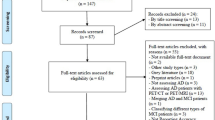Abstract
Neurodegeneration refers to the progressive loss and damage to the structure and/or function of neuronal cell, leading to death of neurons. It is one of the most feared associates of the increased longevity. Alzheimer’s disease (AD) is a neurodegenerative disorder, whose etiology and path physiology is not known to the fullest. The capacity of recognizing the first sign of disease has enormous socioeconomic benefit. Applications of various noninvasive MR imaging techniques are widely explored by researchers for this purpose. Here we reviewed (1) the recognized pathophysiology of Alzheimer’s disease and its categories; (2) data analysis methods applied on functional magnetic resonance imagining (fMRI) modality and summarized them with respect to statistical power, method, approach, its application(s), advantage and limitation of them; (3) Reviewed often used fMRI data processing tool box/software with respect to different aspects and features it offers; (4) a critical review on application of artificial intelligence (AI) techniques w.r.t objective(s) achieved, approach followed, methods applied, materials used, modalities considered, dataset used, process followed, accuracy achieved/claimed and results reported by various researchers to classify AD subject from fMRI data and suggest multimodality-based approach for computer-aided detection (CAD) system, to improve accuracy of classification.
Access this chapter
Tax calculation will be finalised at checkout
Purchases are for personal use only
Similar content being viewed by others
References
d’Oleire Uquillas F et al (2018) Interactive versus additive relationships between regional cortical thinning and amyloid burden in predicting clinical decline in mild AD and MCI individuals. NeuroImage Clin 17(September 2017):388–396. https://doi.org/10.1016/j.nicl.2017.10.034
Ledig C, Schuh A, Guerrero R, Heckemann RA, Rueckert D (2018) Structural brain imaging in Alzheimer’s disease and mild cognitive impairment: biomarker analysis and shared morphometry database. Sci Rep 8(1):1–16. https://doi.org/10.1038/s41598-018-29295-9
Rahim M, Thirion B, Comtat C, Varoquaux G (2016) Transmodal learning of functional networks for Alzheimer’s disease prediction. IEEE J Sel Top Signal Process 10(7):1204–1213. https://doi.org/10.1109/JSTSP.2016.2600400
Nasrabady SE, Rizvi B, Goldman JE, Brickman AM (2018) White matter changes in Alzheimer’s disease: a focus on myelin and oligodendrocytes. Acta Neuropathol Commun 6(1):22. https://doi.org/10.1186/s40478-018-0515-3
Cui X et al (2018) Classification of alzheimer’s disease, mild cognitive impairment, and normal controls with subnetwork selection and graph kernel principal component analysis based on minimum spanning tree brain functional network. Front Comput Neurosci 12(May):1–12. https://doi.org/10.3389/fncom.2018.00031
Thompson PM et al (2003) Dynamics of gray matter loss in Alzheimer’s disease. J Neurosci 23(3):994–1005. doi:23/3/994 [pii]
Manuscript A (2011) Tracking Alzheimer’s disease. https://doi.org/10.1196/annals.1379.017.tracking
Kovacs GG (2014) Current concepts of neurodegenerative diseases. Cit EMJ Neurol 1:78–86
Megan JSS, Lee H, Smyser CD (2013) Resting state fMRI: a review of methods and clinical applications. Am J Neuroradiol 9(5):6–9. https://doi.org/10.3174/ajnr.a3263.resting
Buxton RB (2015) The physics of functional magnetic resonance imaging (fMRI) Richard. IOP Publ Ltd. 76(9):1–20. https://doi.org/10.1088/0034-4885/76/9/096601
Lv H et al (2018) Resting-state functional MRI: everything that nonexperts have always wanted to know. Am J Neuroradiol 39(8):1390–1399. https://doi.org/10.3174/ajnr.A5527
Abrol A, Fu Z, Du Y, Calhoun VD (2019) Multimodal data fusion of deep learning and dynamic functional connectivity features to predict Alzheimer’s disease progression. 2019 41st Annual international conference of the IEEE engineering in medicine and biology society, pp 4409–4413. https://doi.org/10.1109/embc.2019.8856500
Park BY, Byeon K, Park H (2019) FuNP (fusion of neuroimaging preprocessing) pipelines: a fully automated preprocessing software for functional magnetic resonance imaging. Front Neuroinform 13(February):1–14. https://doi.org/10.3389/fninf.2019.00005
Pei S, Guan J, Zhou S (2019) Fusion analysis of resting-state networks and its application to Alzheimer’s disease. Tsinghua Sci Technol 24(4):456–467. https://doi.org/10.26599/TST.2018.9010099
Jiao Z, Xia Z, Ming X, Cheng C, Wang SH (2019) Multi-scale feature combination of brain functional network for eMCI classification. IEEE Access 7:74263–74273. https://doi.org/10.1109/ACCESS.2019.2920978
Wang Y et al (2018) A novel multimodal MRI analysis for Alzheimer’s disease based on convolutional neural network. In: Proceedings annual international conference of the IEEE engineering in medicine and biology society EMBS, vol 2018-July, pp 754–757, 2018. https://doi.org/10.1109/embc.2018.8512372
Sarraf S, Desouza DD, Anderson JAE, Saverino C (2019) MCADNNet: recognizing stages of cognitive impairment through efficient convolutional fMRI and MRI neural network topology models. IEEE Access 7(Mci):155584–155600. https://doi.org/10.1109/access.2019.2949577
Wang Z, Zheng Y, Zhu DC, Bozoki AC, Li T (2018) Classification of Alzheimer’s disease, mild cognitive impairment and normal control subjects using resting-state fMRI based network connectivity analysis. IEEE J Transl Eng Heal Med 6(July):1–9. https://doi.org/10.1109/JTEHM.2018.2874887
Golbabaei S, Dadashi A, Soltanian-Zadeh H (2016) Measures of the brain functional network that correlate with Alzheimer’s neuropsychological test scores: An fMRI and graph analysis study. In: Proceedings annual international conference of the IEEE engineering in medicine and biology society EMBS, vol 2016-Oct, pp 5554–5557. https://doi.org/10.1109/embc.2016.7591985
Bi XA, Shu Q, Sun Q, Xu Q (2018) Random support vector machine cluster analysis of resting-state fMRI in Alzheimer’s disease. PLoS ONE 13(3):1–12. https://doi.org/10.1371/journal.pone.0194479
Author information
Authors and Affiliations
Corresponding author
Editor information
Editors and Affiliations
Rights and permissions
Copyright information
© 2021 The Author(s), under exclusive license to Springer Nature Singapore Pte Ltd.
About this paper
Cite this paper
Varnagar, C.R., Shah, H.B. (2021). A Comprehensive Review on Analysis Methods, Software, and Application of fMRI for Classification of Alzheimer’s Disease. In: Biswas, A., Wennekes, E., Hong, TP., Wieczorkowska, A. (eds) Advances in Speech and Music Technology. Advances in Intelligent Systems and Computing, vol 1320. Springer, Singapore. https://doi.org/10.1007/978-981-33-6881-1_26
Download citation
DOI: https://doi.org/10.1007/978-981-33-6881-1_26
Published:
Publisher Name: Springer, Singapore
Print ISBN: 978-981-33-6880-4
Online ISBN: 978-981-33-6881-1
eBook Packages: Intelligent Technologies and RoboticsIntelligent Technologies and Robotics (R0)




